What the shales have taught us
From Barnett to Bakken, lessons learned about hydraulic fracturing have pushed unconventional production to levels once considered impossible
By Katie Mazerov, contributing editor
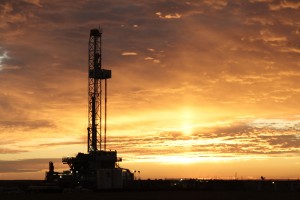
W hen the industry cracked the code on shales, it unlocked a wealth of unconventional resources, introduced new methods of drilling and completions, and made “fracturing” a household word. Technology sparked the shale boom that began a decade ago in the dry gas reservoirs of the Barnett play, and then moved to Haynesville, Marcellus and others. Technology has continued to drive the current migration into the oil and liquids-rich Bakken and Eagle Ford plays, with new and extremely prolific basins continually being discovered.
However, along the winding road of shale production, the industry has learned many important lessons, not the least of which is this: Fracturing methods that work in one play may not yield success in another.
While that fundamental truth may seem obvious now, it wasn’t always so. Over the years, operator
s and service companies have developed an extensive arsenal of tools and knowledge they can call on when embarking on a new fracturing operation. Greater understanding of the geologic properties of reservoirs, enhanced well architecture, improvements in drilling, multi-well pads and developments in fluid and proppant technologies have changed the landscape, delivering production levels that were unattainable five years ago.
“In the early days of post-Barnett gas shale development, the tendency was to say, ‘If it worked in the Haynesville or the Barnett, it ought to work here,’ but that was not necessarily the case,” Scott Nelson, director of engineering for US Land Pressure Pumping for Baker Hughes, said. “Often, the technologies that were developed and refined in the Barnett just didn’t fit other plays because they had different reservoir properties – the rock was not as brittle or as hard, or the pore structure was different. So, it’s important to assess the reservoir properties in these plays before we design a fracturing treatment.”
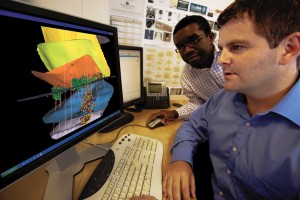
That approach is the embodiment of the company’s “Understand the Reservoir First” philosophy – one that first examines the geological and geomechanical characteristics of the reservoir and its bounding beds. Gas shales, for example, are typically mudstone rocks defined by their particle size, and have varying percentages of clay, carbonate and silica content, explained Randy LaFollette, director of applied reservoir technology for Baker Hughes’ Pressure Pumping division. The Bakken oil play is geologically dissimilar, as it may be either a siltstone with high carbonate content or a crystalline carbonate rock, depending on where it is geographically in the basin.
“It begins with understanding what we have in terms of matrix permeability and the degree of natural fracturing permeability, combined with the character of the oil, which drives the mobility,” Mr LaFollette said. “That determines whether we need shorter, more highly conductive hydraulic fractures or much longer and less conductive fractures. Once we understand the basic reservoir properties, we have a better understanding of the issues and we can bring in the appropriate technologies.”
A Learning Curve
Many of the fracturing techniques used in the gas shales were based on slick-water technology and sand, he continued. “But as we have moved into more oil-rich reservoirs, such as the Eagle Ford and the Bakken, we are pumping more complicated fracturing fluids to carry larger-mesh sand grains. And when we begin operating in some of these newer plays, such as the Utica in Ohio, there will be another learning curve. We will have to model the Utica to determine the fracturing technologies required to address the stimulation needs of those reservoirs.” Baker Hughes’ IntelliFrac service, which combines microseismic services and pumping knowledge, can validate the modeling.
Ultra-lightweight proppants and fluids also have been enhanced and are used in the more oily plays to achieve greater conductivity. “We must have good conductivity in fracturing to produce that liquid,” explained Harold Brannon, Baker Hughes’ vice president of technology for Pressure Pumping. “Gas is more mobile than liquid, so in the Bakken, for example, we need to use higher-viscosity fluids to achieve wider fractures, and we need a larger proppant size to deliver the higher conductivity.”
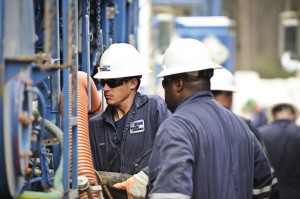
Baker Hughes’ LiteProp ultra-lightweight proppants (UWLPs) are neutrally buoyant, low-density materials that are slightly heavier than fresh water but considerably less dense than sand. They can be placed throughout the induced fracture to enhance production with greater conductivity. “Slick-water fluids drop all the proppant to the bottom of the fractures. But, the ultra-lightweight proppants can be transported deeper into the reservoir prop fractures to greater vertical height and provide a better flow of hydrocarbons,” Mr Nelson explained.
Over the years, there has also been considerable development in completion architecture technologies, such as packer and sleeve configurations that can allow more zones to be isolated and treated, Mr Brannon noted. “We used to do six or eight intervals per well, but with enhanced packer and sleeve systems, we can get as high as 40 intervals with telescoping port systems, extending the stage count even farther,” he said.
And the technology is still advancing. “In the oil shales, we have operators completing more discrete intervals in laterals as long as 5,000 ft,” he added. “The more segments we can fracture individually, the better the well performs.”
Going forward, the emphasis will be on improving the characterizations of the laterals themselves to increase production. “Very few laterals are actually logged now,” Mr LaFollette said. “But we are using logging while drilling (LWD) technology extensively in one gas play to characterize the natural fractures, as well as the offset well hydraulic fractures along the full length of the lateral. This way, the operator can design a completion to target specific rock types and fracture patterns, avoiding the offset well fractures.” He notes that this technology hasn’t transitioned to the oily plays yet but has potential there.
Roots of Fracturing
Fracturing and stimulation may date back to the 1940s but development of the methods used today goes back to the initial shale research efforts sponsored by the US Department of Energy and the Gas Research Institute in the late 1980s and early 1990s in the Lower Huron play that underlies southeastern Ohio, West Virginia and northern Kentucky, explained Matthew Blauch, director of product development for Superior Well Services, a subsidiary of Nabors Drilling.
“At that time, the concept of fracturing was perceived as creating a single-plane fracture. The idea of creating multiple fractures, and fracture swarms and networks, went against the grain of that model,” Mr Blauch said. But through microseismic studies of the fracture systems created by Mother Nature, the industry evolved.
“It wasn’t until we started doing horizontal drilling and multistage fracturing that we learned we want to create more complex fractures because that is what gives us the surface area we need to develop these reservoirs efficiently, cost-effectively and surgically – putting the fracture networks where they need to be,” he said.

That early learning in vertical wells in the Lower Huron was taken to the Barnett play, which became a “springboard” for the key technologies that enable the level of shale production being undertaken today. “The Barnett learning curve spanned a long time frame,” Mr Blauch said.
While there are key differences in producing dry gas plays versus liquids-rich reservoirs – especially regarding the use of proppants and fluids – the same basic principles apply. “It’s still about accessing the reservoir and achieving the surface area through fracture networks,” he continued.
“We have learned that source rock is source rock, and we can unlock the resources with the same basic approach, but we also must determine what a specific reservoir wants and responds to, and match that reservoir with the proper techniques for multi-phase flow. In the Bakken play, for example, we need greater conductivity, wider fractures and more complex polymer-based fluids to move these multiphase liquids.”
There are still hurdles to overcome in fracturing, especially related to the large amounts of water the process requires. “Water is becoming a limited resource, and this will require a dramatic shift in methods, and a lot more chemistry and fluids development,” Mr Blauch said.
Nabors has pioneered efforts in that area by promoting the reuse of water and use of non-potable water. One of the company’s flagship fluid systems is the salt-tolerant friction reducer, which allows for the reuse of water that otherwise could not have been used. “We also are able to use brines now, something that was unheard of not too many years ago,” Mr Blauch said.
Increased scrutiny and disclosure of chemicals used in fracturing also is requiring the industry to retool products and develop more controls on what can be pumped into the formations. “We are going above and beyond with our practices and products, such as capturing silica dust and using green fluid systems that have zero environmental impact,” Mr Blauch noted.
Those issues, along with zonal isolation and well completion configuration, loom large as the industry continues to fine-tune the technologies that are also making it possible to economically develop “new” plays, such as the Utica and the Mississippi Chat in northern Oklahoma and southern Kansas. “For example, we would like to achieve results with smaller-diameter boreholes,” Mr Blauch said. “That is a big challenge moving forward.”

The Emerging Niobrara
Hydraulic fracturing methods are being applied to a variety of unconventional formations, some of which are characterized by shale and chalk. One such formation is the Niobrara, the emerging oil and gas play that extends from northeastern Colorado into Wyoming and Nebraska.
Marathon Oil made a significant entry into the Niobrara’s Denver/Julesburg (DJ) Basin in 2010 and has built a position of approximately 144,000 net acres. Bruce McIninch, the company’s worldwide completions manager, describes the Niobrara as having tight, layered chalk and marlstone with some natural fracturing. “We will drill, fracture and complete the Niobrara with similar methods used in other shale plays,” he said. “Five years ago, we would not have had the potential for success that we have now.”
Marathon, which also is active in the Bakken, Eagle Ford and Anadarko/Woodford plays, expects to complete 25 to 30 net wells in the DJ Basin this year at a rate of approximately two wells per month. Eight horizontal wells have already been drilled, and three are producing.
“Over the years, we have come to realize the importance of drilling vertical wells in the exploration phase to collect data upfront and initially target data from a single fracture to understand the formation before we turn horizontal and target multiple-fracture stages,“ Mr McIninch said. “This way, we achieve an improved well design and gain a better understanding of the productivity and expectations for the field.”
He added, “We’re collecting more micro-seismic data for this play and finding the information useful in learning where the fractures are going to improve well placement.”
That kind of upfront planning, along with improvements in technology in all aspects of the industry, has improved the ability to stay on target, Mr McIninch believes. “Over the last five years, improvements in drilling have delivered us more of the targeted reservoir to complete,” he said. “And with improvements in fracturing technologies and the ability to segment horizontals for multiple stages with logs and mini-frac data, we can better determine what areas of the reservoir to fracture and produce. The tools are better, and the geologists and engineers are smarter. It’s all coming together at the right time.”
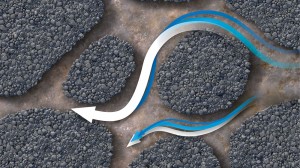
Targeting life-of-well production will continue to be an advancing area, Mr McIninch contends. “In the Bakken, for example, we are running 30-stage frac operations, but when we’re using sleeve systems, there is no easy way to identify which of those 30 stages are contributing the most. Chemical tracers can provide only limited flow contribution data. With the continued move toward limiting frac sleeve restrictions, there is huge potential for applications using distributed temperature surveys and logging tools to identify where the production is coming from.”
Water conservation and other practices for environmental protection are important values for Marathon Oil, both to enhance safety and increase efficiency, Mr McIninch said. “In the Eagle Ford play, we are switching some wells from slick water treatments to hybrid gel systems that deliver more proppant with less water. We’re also looking at the ways we perforate and have used new reactive metal liner perforating charges, which allow us to fracture the wells with less acid and reduced hydraulic horsepower, reducing risk and saving maintenance on pumping equipment.”
The company also is applying the use of brackish or non-potable water and studying the reuse of produced water. “We continue to work with our service providers to understand and develop systems that can utilize high-salinity fluids to cross-link the gels to deliver proppant. This can be better for the environment and the community.”
The industry is also looking forward to enhancements in re-fracturing techniques. “There is huge potential for the new technologies to allow us back into producing stages or re-frac intervals that aren’t producing – to get more oil and gas out of the ground without having to drill new wells,” he said.
Push for Efficiency
The exploitation of unconventional resources, primarily shale reservoirs, has been a major catalyst for the increasing activity of exploration and development in North America. This trend is continuing to grow as unconventional resource opportunities are identified throughout the world. A significant driver behind improved economics in the North American environment has been optimizing the increase in the well “intensity factor.”
“The fact that unconventional reservoirs are as successful as they are today has been primarily due to improvements in efficiency and advancements in stimulation strategies,” said Salvador Ayala, vice president of well production services for Schlumberger. “We have evolved from a single vertical well with several fracture treatments to multiple horizontal wells per location, with many stages of hydraulic fracture treatments.” Today, the industry is drilling five, six or more wells on a pad. In one extreme example, more than 50 wells were drilled on a pad in Colorado.
Multi-well pads also minimize the impact on the environment and increase the efficiency of the operator’s resources, added Rick Klem, marketing communications manager for Schlumberger Well Services.
Since the 1940s, hydraulic fracturing has evolved from pumping complex chemical formulations with limited knowledge of actual fracture dimensions to science-based fracture design, modeling and evaluation methods, which incorporate large amounts of reservoir information, including microseismic data. The development and implementation of cleaner and safer chemistry technologies have also improved the way operations are performed today.
“Now we have a far better understanding of the actual fracture dimensions that are created,” Mr Ayala said. “This has spawned such advances as the Schlumberger HIWAY flow-channel hydraulic fracturing technique, which enables the placement of high-conductivity channels through pulses of specialized proppant stages during the fracture treatment.
“This is a step-change from the traditional method of placing proppant homogeneously across the entire fracture section using high injection rates,” he explained. By increasing the effective stimulated rock volume, the HIWAY method increases production while reducing water by as much of 50% and proppant by as much as 40%, he added.
This technique has been used successfully in a number of unconventional reservoir operations worldwide. For example, an Eagle Ford operator applied the fracturing technique with great results. In a recent completion for a cumulative 60-day period, the HIWAY treatment improved oil production by 43% and gas production by 61% in a horizontal well with reservoir pressures of 8,000 to 10,000 psi. Water and proppant were reduced by 58% and 35%, respectively.
“What this means is, we are delivering the same, and usually improved, production with less environmental impact and a smaller footprint,” Mr Klem said. “This is basically a smarter, faster way to develop assets, which again improves the efficiency of the operations.”
The StimMAP LIVE, a real-time, microseismic fracture monitoring tool can determine where the fracture is going and how far it is extending in real time. “With this tool, we can pinpoint where the fractures are and ensure that we are clearly staying in the pay zone,” Mr Klem said.
The mapping technology was used to lower nonproductive time, and ultimately costs, in a tight-gas well that required multizone stimulation and isolation in the Rocky
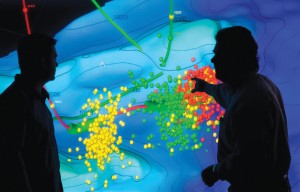
Mountain region. The operator was able to test, monitor and validate more cost-effective stimulation fluids and optimize pump rates and proppant volumes. This resulted in faster stimulation operations, increased flowback and higher overall production at a lower cost.
“Going forward, I believe there will be a continued push for solutions that drive efficiency, increase safety and reduce environmental impact,” Mr Ayala said. “Currently, the industry is working on a proven way to mathematically model fracturing in unconventional reservoirs prior to operations. This will lead to further efficiency improvements by enabling us to use only the amount of material required to optimize fractures.”
To address that challenge, Schlumberger has developed an unconventional fracture simulator that serves as both a training tool and a better way to design completions. “The simulator allows us to accurately predict where the fracture will be and what it will look like before we pump. Then, we design only what is necessary to target the sweet spot,” Mr Klem said. “Most jobs take a geometric approach by fracturing equidistant points across the entire reservoir. But Mother Nature is not very geometric. We want to target only the areas that are economical to fracture.”
HIWAY and StimMAP LIVE are marks of Schlumberger. Understand the Reservoir First, IntelliFrac and LiteProp are trademarked terms of Baker Hughes.


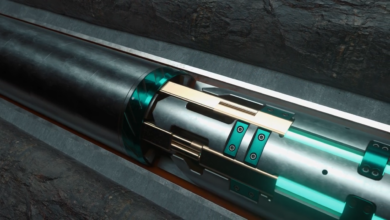

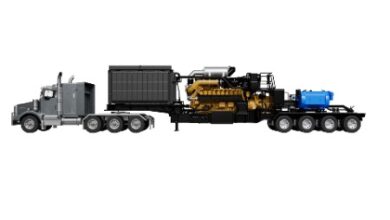
I believe Gasfrac LPG fracturing technology deserves to be featured in this article; LPG fracturing is proven to yield better production, increased EURs and lower pollution and emissions; further more since the process is waterless it saves on fresh water and doesn’t produce any waste fluids.